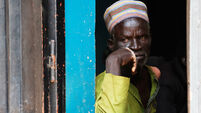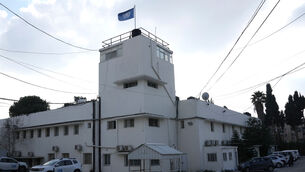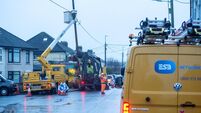Rescue teams will work 'until last person is found' as aftershocks hinder search

A day after a shallow quake killed 250 people and levelled three small towns, a 4.3 magnitude aftershock sent up plumes of thick dust in the hard-hit town of Amatrice.
The aftershock crumbled already cracked buildings and prompted authorities to close roads. Another person was sent to the hospital.











